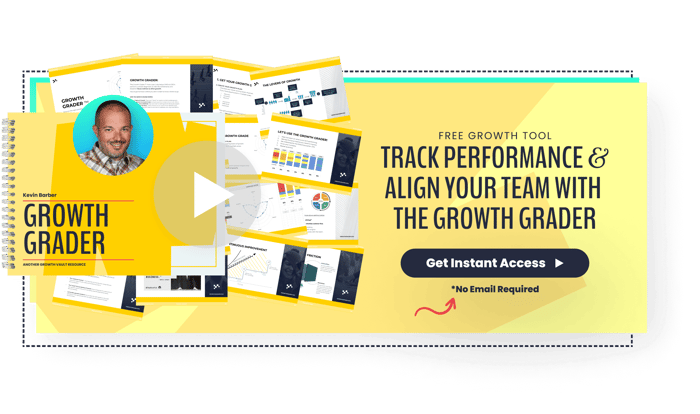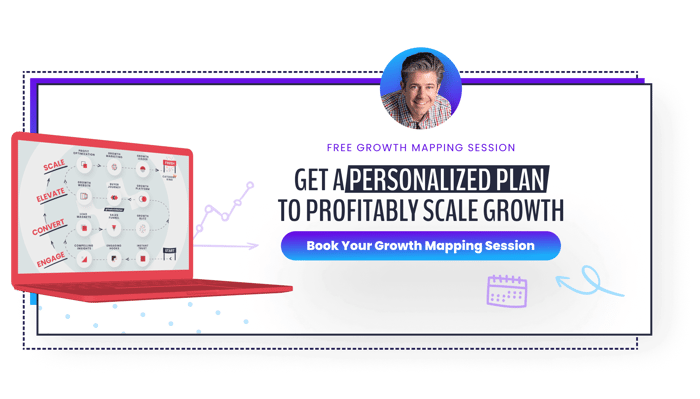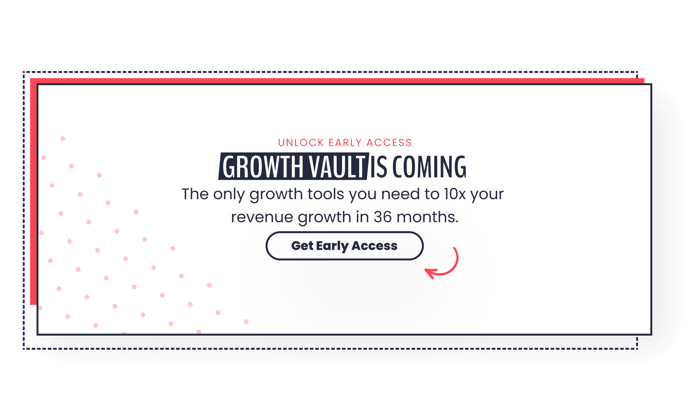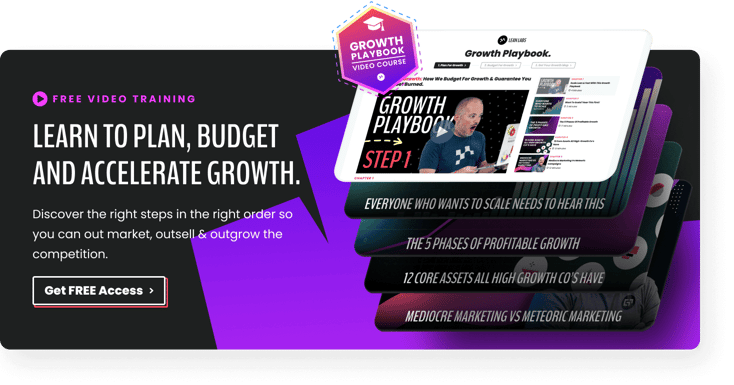Ignoring lead nurturing is like making a big beautiful ice cream sundae, complete with whipped cream, chocolate sauce, and sprinkles, and then leaving it out in the sun to melt.
Effective lead nurturing is critical to driving sales opportunities from your website.
A lack of effective lead nurturing is often the cause of website leads failing to become customers.
Even if you have a significant amount of top-of-the-funnel (TOFU) leads, you can't just abandon them and hope they become customers.
You must nurture them through the buyer's journey.
We’ve compiled a list of the best lead nurturing practices.
This article provides enough actionable tips to develop more beneficial relationships with your leads through every stage of the buyer’s journey.
Why is B2B Lead Nurturing Important?
Most B2B sales require multiple touchpoints. They’re often more complex and involve high-ticket purchases. Multiple decision-makers and stakeholders get involved, and need more information and time to make an informed decision.
That’s why it’s essential to get potential customers to say yes multiple times. When customers read your blog post, it’s a yes. When they click your CTA, it’s a yes.
When they download your lead magnet, another yes. Lead nurturing establishes trust, and starts building the relationship with your prospect. It also helps qualify leads, resulting in a higher-quality sales pipeline.
Without a nurturing process, it’s easy to lose track of leads. You invest time and money to capture them, don’t let them die on the vine.
What is the B2B Lead Nurturing Process?
We’ll break it down into five key stages.
Lead Capture: The process of collecting information about potential customers, typically through forms on your website, events, webinars, or other marketing initiatives. The aim is to gather information about the lead's interests, needs, and preferences.
Pro Tip: Prioritize the story. The right message, flow, and tone will capture the attention of the best leads.
Lead Qualification: Evaluate your lead. Are they a good fit for what you offer? This process typically involves reviewing the lead's demographics, job titles, and other information to see if they meet your ideal customer profile.
Related: How to Choose a Lead Qualification Framework? 7 Examples To Pick From
Lead Scoring: Assign each lead a score based on their interest and engagement level with your business. It’s crucial to a successful sales funnel and can help prioritize sales efforts by identifying which leads are most ready to make a purchase.
Lead Segmentation: Leads can be grouped according to their interests, needs, and buying stage, allowing more personalized lead nurturing by targeting specific segments with tailored messages.
Pro tip: By segmenting your contacts, you can improve your open rates by about 15%.
Why?
Because you’re targeting people based on their behavior, what they’ve indicated an interest in, and more. We all get those emails that are too salesy or irrelevant, and we all know they go right to the trash.
Segmenting your contact lists effectively helps you send content your contacts want to read. The risk of not segmenting your list, or sending a blast to the same list too frequently, is exhausting your leads.
Lead Communications: Nurture your lead at this stage through automated and personalized communication, such as email campaigns, webinars, and other content. Providing valuable information and educating your lead about your company while building trust is the best way to establish a successful relationship.
10 B2B Lead Nurturing Best Practices
- Embrace Email Automation
- Host a Webinar or Live Q&A
- Re-Engage Cold Leads
- Scrub Leads That Don’t Bite
- Use a Multi-Channel Approach
- Create More Lead Capturing Opportunities
- Send Genuine, Quick Follow-Ups
- User Personalized Content and Messaging
- Align Sales and Marketing
- Use Progressive Profiling
1. Embrace Automated Emails
When your leads take specific actions, you can trigger emails to send. It’s an easy way to stay in touch with leads and provide valuable information.
For example, let’s say your customer signs up for a free trial. You can start an onboarding series with automated emails to enrich the free trial and show customers that you care about their success.
Other examples include welcome emails, abandoned cart emails, re-engagement emails, and data enrichment emails.
Pro tip: Data enrichment emails are a good play for lead nurturing. They survey customers and ask them to provide more information about themselves. Kind of like a “hey, we want to stop sending you irrelevant messages, can you give me some information?” play.
These emails help keep your contact records up to date and give you additional context about the people on your list. But, they benefit the contacts, too. By getting this information, you can send messaging and content that fits where they are in the buying process, so your emails will be useful.
2. Host a Webinar or Live Q&A
Webinars or live Q&As are an excellent way to engage with leads. People are hesitant to schedule sales meetings or demos– everyone has sat through at least one-too-many aggressive sales calls.
Live webinars are interactive and give potential buyers a way to get to know you, in a low-pressure environment. They get to ask questions and receive answers in real time.
Webinars are great for educating leads about your company, showcasing your products, live demonstrations, and providing insights into industry trends. Live Q&As add a personal touch.
Done well, webinars are a fantastic way of nurturing leads and pushing prospects over the line. And they fit the current workplace trends.
Pro Tip: Join forces with another thought leader in your space for a webinar and borrow their audience. You'll reach more people, and you can even craft an offer that encourages people to use your products together.
3. Re-engage Cold Leads
It’s a challenging task to re-engage cold leads, as they’ve shown little to no interest in your company recently. But, with the right approach, you can re-ignite their interest.
1. Personalized Outreach: Send cold leads personalized emails or direct mail highlighting your offerings' benefits and addressing their specific pain points or needs.
2. Offer Incentives: To entice cold leads to re-engage, offer them exclusive incentives, such as discounts, free trials, or access to exclusive content.
3. Use Different Channels: Reach out to cold leads through various channels, such as social media, direct mail, or even a phone call. Sometimes a different approach is all that's needed to catch their attention.
4. Provide Valuable Content: Provide valuable information to cold leads, such as whitepapers, webinars, or blog posts, to educate them about your products and services. Personalize the communication to help with specific pain points.
5. Leverage Referrals: A personal referral is a powerful way to re-engage cold leads and move them further down the sales funnel. Ask satisfied customers to refer their friends, colleagues, or acquaintances who may be interested in your products or services.
4. Scrub Leads That Don’t Bite
If you exhaust all avenues for connecting with leads, it’s time to say goodbye. By removing leads that don’t engage, you can improve the overall quality of your sales pipeline and focus on promising leads.
It’s like when people unsubscribe from your email list after receiving an email. It’s actually a good thing. They’re not right for your company.
A way to ensure quality leads is to qualify leads better. Many companies don’t even understand the specific qualification of their leads (visitor, lead, MQL, SQL, or unqualified).
Use your definitions of MQL and SQLs, as well as any analytics, and buyer personas, to audit and update the status of the leads you have right now. While this shouldn’t be done too frequently, it’s helpful for the entire team to know your contact database isn’t full of bad leads and erroneous data.
5. Use a Multi-Channel Approach
Your customers might have different preferences for communication. Some might like to converse over email. Others might prefer social media channels.
With a multi-channel approach, you can:
- Reach leads in different ways and increase your chances of making a connection.
- Keep leads engaged by providing personalized and relevant information through different channels.
- Gather data on their preferences and behaviors to help with segmentation and targeting.
- Convert more leads through a consistent and coordinated customer experience.
- Increase your chances of converting leads into paying customers.
6. Create More Lead Capturing Opportunities
Networking events are a great way to generate leads.
Go beyond email and gated content, and experiment with various tactics, such as running Facebook contests or utilizing Twitter cards.
Going back to your buyer personas, and evaluating where your leads congregate, could be a great indicator of where you could try to run paid social lead-capturing campaigns.
Give new tactics a fair run and a decent budget, and see what happens.
7. Send Genuine, Quick Follow-Ups
Whenever a lead provides their contact information, regardless of whether it’s for a free trial or a content offer, follow up with that lead. Preferably by email. And do it quickly.
The messages should be straightforward and clear about any logical next steps associated with their action.
When the lead takes an action requiring a call from sales, that call must happen in five minutes or less. In fact, leads are 21 times more likely to become qualified when contacted within a few minutes following conversion.
Also, remember that the deliverability of all emails you send to that lead will depend on whether they open the first email. Make the subject line punchy and enticing to ensure you stay on their white list.
8. Use Personalized Content and Messaging
Don’t be basic. When you send an email to a lead, make sure it’s personalized. Use personalization tokens in emails, for example, to call out specifics about that individual, such as their name, industry, or company.
Provide content that’s relevant to the offer they converted on. If they downloaded a whitepaper on how to plan for tax season, send them follow-up emails with tax tips and best practices.
No one wants to feel like another number in your system. This is a really simple way to make a lead feel like you know them.
9. Align Sales and Marketing
When you get sales and marketing teams on the same page, working together to identify and nurture leads through the buyer journey, it will lead to higher conversion and sales.
Sales and marketing teams should
- Agree on what constitutes a qualified lead and agree on lead scoring criteria. When they do, marketing hands over high-quality leads.
- Create a process for a seamless handoff of leads to stop them from falling through the cracks.
- Collaborate on lead nurturing strategies, ensuring that leads receive consistent and valuable information throughout the buying journey.
- Work together to reduce duplication of efforts and improve productivity.
Establishing clear communication channels and reviewing and adjusting strategies regularly are crucial to aligning sales and marketing. To ensure effective collaboration, both teams should understand their roles and responsibilities in the lead nurturing process.
10. Use Progressive Profiling
Progressive profiling is one of HubSpot’s best features.
The technology lets you set up form questions that filter out what is already known about a contact.
For instance, for a top-of-funnel offer, we may only ask for their name, email, and phone number. When the contact fills out a form for an additional offer, we already know their phone number. So, HubSpot replaces the phone number with a different question queued up by priority.
Contacts provide progressively more information over time, rather than bouncing over super-long forms the first go around.
HubSpot is one of a few great lead nurturing software with advanced profiling tools for small, medium, and large businesses. We use it, swear by it, and we recommend considering it if you want to ramp up your lead nurturing efforts.
Accelerate Growth With Effective B2B Lead Nurturing
Whether or not your lead nurturing is successful is based on your engagement with your leads.
By finding effective and creative ways to be one on one, you can help build rapport with potential customers. Lead nurturing can be as simple as providing leads with the education and support that they need, when they need it the most.
Thoughtful, effective lead nurturing is essential if you want to get results and ROI out of your growth marketing. More traffic and leads won’t help you grow if those leads don’t reliably move through the customer acquisition funnel.
At Lean Labs, we know the value of moving prospects through the entire funnel, nurturing leads who become customers, and finally, brand advocates. Want to see how we do it successfully?
Unlock the Growth Playbook today to see how we plan for growth, budget for growth, and accelerate results!








